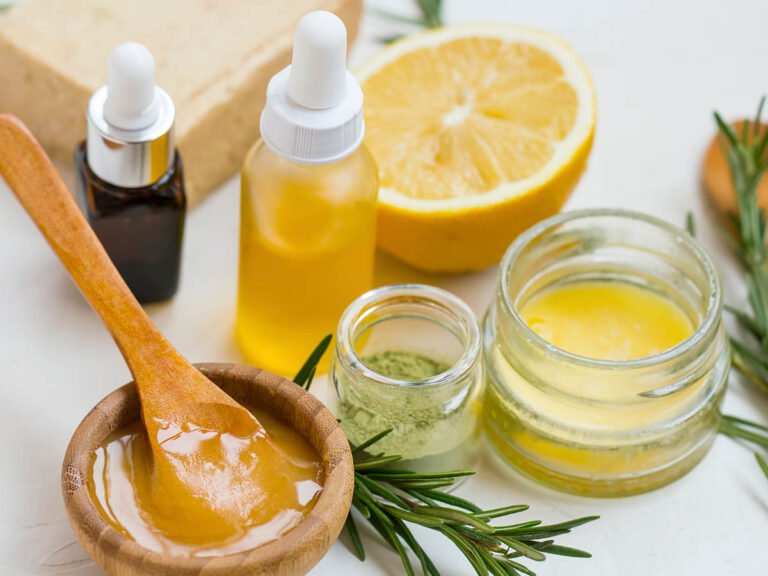In recent years, there has been a notable shift in the beauty industry towards clean beauty products. Consumers are increasingly prioritizing natural and non-toxic ingredients, seeking transparency and sustainability in their skincare and cosmetics choices. This article explores the reasons behind this trend, the benefits of clean beauty, and how consumers can navigate the world of natural skincare and cosmetics.
1. What is Clean Beauty?
Clean beauty refers to skincare, haircare, and cosmetic products formulated with non-toxic, safe, and sustainable ingredients. Unlike conventional beauty products, which may contain synthetic chemicals, parabens, sulfates, and other potentially harmful ingredients, clean beauty products are free from harsh chemicals and are often cruelty-free and environmentally friendly.
2. Reasons for the Shift Towards Clean Beauty
a. Health Consciousness: With growing awareness of the potential health risks associated with certain chemicals found in beauty products, consumers are seeking safer alternatives to protect their skin and overall well-being.
b. Environmental Concerns: The beauty industry’s impact on the environment, including pollution, waste generation, and animal testing, has prompted consumers to opt for cleaner and more sustainable beauty options.
c. Transparency and Trust: Clean beauty brands prioritize transparency in labeling and ingredient sourcing, fostering trust and accountability with consumers who seek clarity about what they’re putting on their skin.
d. Personal Values: Many consumers align their beauty purchases with their personal values, such as supporting cruelty-free, vegan, or eco-conscious brands that reflect their ethical and environmental beliefs.
3. Benefits of Clean Beauty
a. Skin Health: Clean beauty products are formulated with gentle, nourishing ingredients that promote skin health and address specific skincare concerns without causing irritation or adverse reactions.
b. Environmental Impact: By choosing clean beauty products made with sustainable and ethically sourced ingredients, consumers can reduce their ecological footprint and support brands committed to environmental stewardship.
c. Ethical Standards: Clean beauty brands often adhere to strict ethical standards, such as cruelty-free practices, fair trade sourcing, and eco-friendly packaging, aligning with consumers’ values and preferences.
d. Transparency and Trust: Clean beauty brands prioritize transparency by disclosing ingredient lists, manufacturing processes, and sourcing practices, allowing consumers to make informed decisions about their skincare and cosmetic purchases.
4. Key Ingredients to Avoid in Conventional Beauty Products
a. Parabens: Used as preservatives in many skincare and cosmetic products, parabens have been linked to hormone disruption and adverse health effects.
b. Sulfates: Commonly found in cleansers and shampoos, sulfates can strip the skin and hair of natural oils, leading to dryness, irritation, and sensitivity.
c. Phthalates: These chemicals are often used in fragrances and plastic packaging and have been associated with reproductive and developmental issues.
d. Formaldehyde: A known carcinogen, formaldehyde is used in some hair straightening treatments and nail polishes, posing health risks to salon workers and consumers alike.
5. How to Transition to Clean Beauty
a. Read Labels: Familiarize yourself with common harmful ingredients and check product labels for clean beauty certifications, such as USDA Organic, EWG Verified, or Leaping Bunny.
b. Research Brands: Look for clean beauty brands that prioritize transparency, sustainability, and ethical practices, and research their ingredient sourcing and manufacturing processes.
c. Start Slow: Transitioning to clean beauty doesn’t have to happen overnight. Begin by replacing one or two products in your skincare or makeup routine with cleaner alternatives and gradually incorporate more as you become familiar with clean beauty options.
d. Experiment: Clean beauty offers a wide range of products tailored to different skin types, concerns, and preferences. Experiment with different brands and formulations to find what works best for your skin and lifestyle.
As consumers become more conscious of the ingredients in their skincare and cosmetic products, the demand for clean beauty continues to grow. By prioritizing natural, non-toxic, and sustainable alternatives, consumers can protect their skin, support ethical and environmentally friendly brands, and contribute to a healthier, more sustainable beauty industry. Embracing clean beauty is not only a personal choice but also a step towards a safer, greener, and more transparent future in the world of beauty and skincare.

